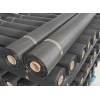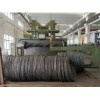
It has been many years since the Federal Reserve in the United States moved interest rates higher. The housing crisis of 2008 and the global economic issues that followed forced the U.S. central bank to embark on six years of lowering interest rates and a policy of quantitative easing. While the U.S. economy has improved in 2015, it stands alone in the world. Lethargic economic conditions in Europe caused the European Central Bank to institute a quantitative easing program of their own in early 2015.
While interest rates in the U.S. fell to zero percent, European rates are negative in some nations.
In China, an economic slowdown caused the Chinese central bank to lower interest rates six times in 2015 as the country struggles to achieve a growth rate of 7%, so far it has fallen short of that level.
In Russia, a combination of sanctions imposed by the U.S. and Western Europe and low raw material prices has caused the Russian economy to weaken dramatically. In Brazil, Australia, Canada and other commodity producing nations, lower prices have decreased revenues causing their currencies to plunge in 2015.
The bear market in commodity prices that began in 2011 when raw material prices peaked, has caused pressure on the global economy. As China slows, demand for commodities decreased. China, by virtue of its population and growth, is the most important nation in the world when it comes to raw material demand. Moreover, the U.S. dollar is the reserve currency of the world and as such, it is the pricing mechanism for most commodities.
Moderate growth in the U.S. caused the dollar to begin to strengthen starting in May 2014. By March of 2015, the dollar has rallied by 27%. Between March and late October, the U.S. currency corrected lower consolidated against other currency values.
In November 2015, the dollar began to move higher once again however, a correction that commences on December 3 moved the dollar lower from new highs on that date.
Prospects for a U.S. interest rate rise means that the dollar will have a higher yield than other competing currencies. Higher U.S. interest rates combined with moderate growth in the U.S. economy is supportive of the dollar. The U.S. central bank had promised an interest rate rise in 2015 but as of the middle of December, they had yet to act. On November 18, 2015, the Fed released minutes from their October meeting. In those minutes, most members of the Federal Market Open Committee stated that they favored a rise in the short-term interest rate at the December meeting on the 16th of the month.
A rising dollar is generally bearish for raw material prices. A rise in interest rates is also a negative factor for commodities. When interest rates rise, it costs more to carry or finance long positions or inventories of commodities. Therefore, consumers and buyers of raw materials become less likely to hold inventories. One of the reasons that commodity prices increased between 2008 and 2011 was the low level of interest rates in the United States. This had depressed the value of the dollar and caused financing rates to plunge in order to stimulate the economy.
Now that interest rates are set to rise in the U.S., it is likely that commodity prices will fall further. As of December 11, the price of copper was trading at $2.11 per pound, recovering after making new lows at $2.002 on November 23. However, in 2008, copper traded just below $1.25 and in 2000, the price was around the 85 cent per pound level. In early December, gold fell to the lowest price since February 2010 when it traded to $1045.40 per ounce. In 2008, the high in gold was at just under $1035 and in 2000; the price of the yellow metal was under $300 per ounce. There are so many other examples in the raw material sector. The price of crude oil plunged from over $107 per barrel in June 2014 to under the $36 level by December 11, 2015. In 2008, crude oil fell to lows of $32.48 and in 2000; the price was below $25 per barrel.
There are many reasons for the bear market in commodity prices. The economic slowdown in China, a weak Europe and a rising dollar all contributed. Rising interest rates in the United States will likely cause the dollar to strengthen further putting more pressure on commodity prices. The higher cost of financing commodities in dollar terms is a bearish sign for raw materials and it is a good bet that the bear market in commodities will continue in to 2016.






